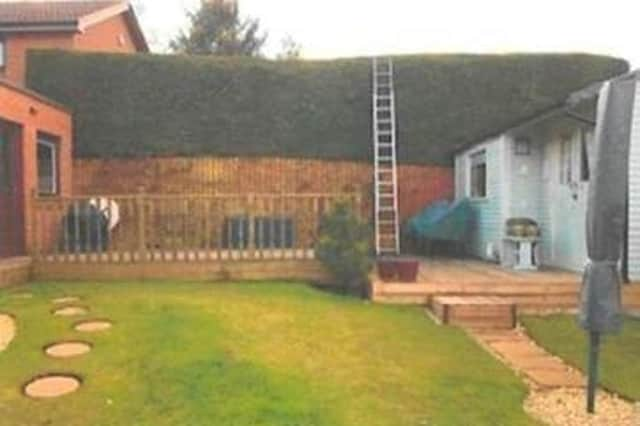Edinburgh resident ordered to trim high hedge after neighbours in Fairmilehead win sunlight battle


A group of Edinburgh residents have won a battle with their neighbour over a “high hedge” they say blocks sunlight, leaving conservatories “cold and dull”, after government planners demanded it be trimmed down. David Linkie, Jeremy Jones and a third complainant previously reported neighbour Barry Rice’s hedge to the council, saying it was “dangerous and expensive” for them to maintain, but no action was taken.
Now an appeal to the Scottish Government has seen that decision quashed and a high hedge notice issued to Mr Rice requiring the height to be reduced from just under four metres to three metres. Planning reporter Amanda Chisholm concluded neighbours’ “reasonable enjoyment” of their gardens was “adversely affected” by the row of Leylandii trees which make up the offending hedgerow.

At one point during the dispute the Fairmilehead residents became so frustrated they cut it themselves and dumped six bags full of branches and clippings on the kerbside outside Mr Rice’s house for him to dispose of, which he said left his wife feeling “intimidated”. He also argued it was “unreasonable for anyone to expect full sunshine all day long”.
One of the neighbours, David Linkie, said in his initial letter to the council that lowering the hedge would “help to reduce the cost of heating the lower back end rooms of the house”. Other issues he claimed were caused by increased shade included being prevented from “better enjoying our outdoor area for relaxing, socialising or exercising” and his conservatory being “frequently cold and dull to sit in” due to natural light being blocked by “the solid 4m by 11m green wall of hedge” blocking natural light.”
He added it was “extremely difficult and dangerous dangling six feet up extendible ladders with sharp equipment to trim the hedge on my side”. Jeremy Jones, another neighbour, said it was “potentially costly to employ professional tree cutting services once/twice a year to maintain or for me to purchase necessary hedge trimming equipment to get the job done”.
In a joint appeal statement to the Scottish Government’s Planning and Environmental Appeals Division (DPEA) the three residents said revised guidance on high hedges “has not been applied correctly,” claiming there were “errors in the parameters used to calculate light loss”. They said: “There is clearly high risk involved due to the height, volume of work involved and using dangerous and sharp hedge trimming tools required to undertake the job.”
After taking matters into their own hands to trim the hedge on their sides they said Mr Rice disposed of the branches left near his door but told them “we won’t be accepting the cuttings again”. They added: “This leaves the impacted appellants with the future burden of disposal twice a year.”
In his response Mr Rice said his opinion was that the hedge “does not seriously impact the reasonable enjoyment of their properties, as the maintenance required is only once or perhaps twice a year”. He said: “Owning a garden requires all year round attention but doesn’t appear to have any serious impact on reasonable enjoyment, as the sound of children and adults enjoying their garden can be heard throughout the year. Everyone’s gardens suffer from shading at different times of the day and evening as the sun rotates. It is therefore unreasonable for anyone to expect full sunshine all day long.”
He added: “The six bags left on our kerb side for our disposal fitted into our brown garden waste bin and returned as requested. My wife felt it was unnecessary for two men to approach our door and speak to her when she was on her own, making her feel intimidated and claiming that it was our responsibly to dispose of the cuttings left by them.”
Issuing her decision after visiting the properties, Ms Chisholm disagreed with the council’s view that there was “no adverse effect from the high hedge”. In a report she said the row of trees were “overly dominant” and tall enough to affect light levels in the complainants’ gardens. A DPEA letter sent to Mr Rice said the hedge must be cut down to three metres by March next year at the latest. Thereafter it will be allowed to grow back as tall as 3.68m – just 22cm shorter than its current height.